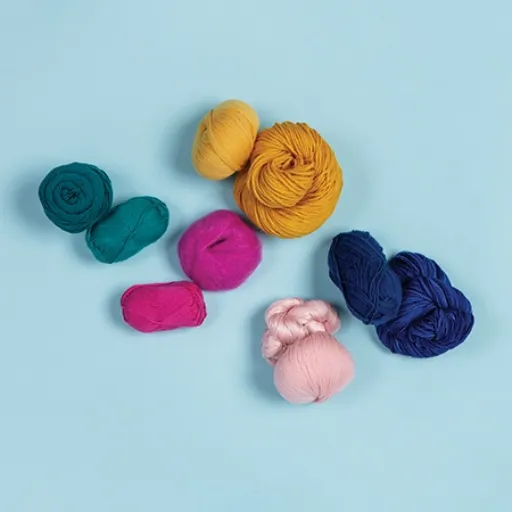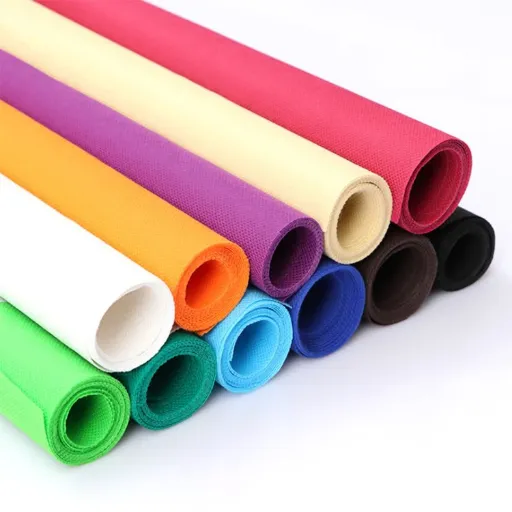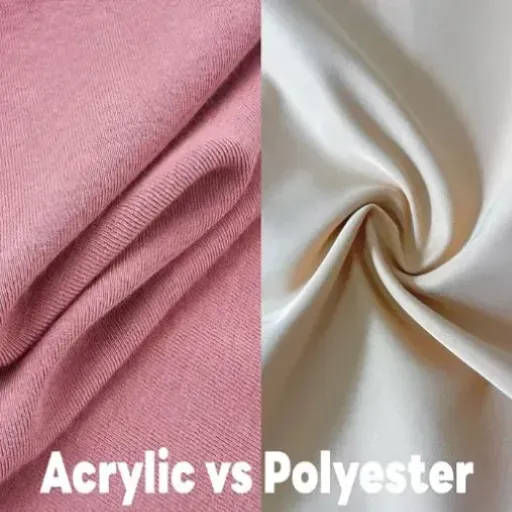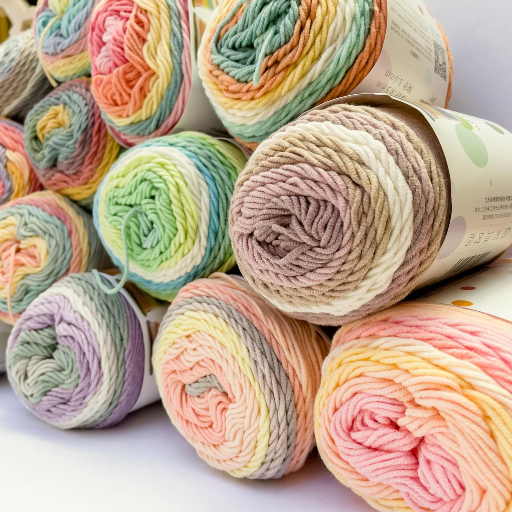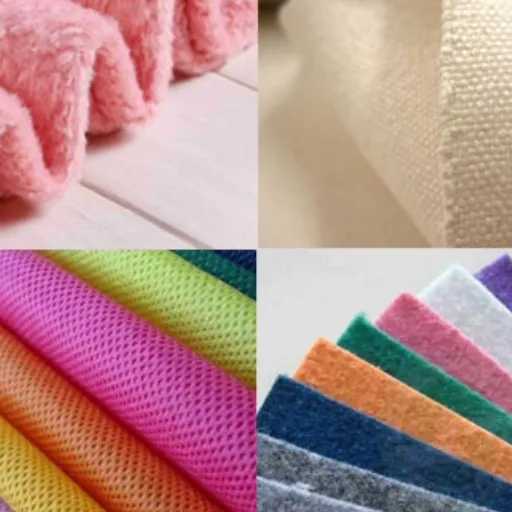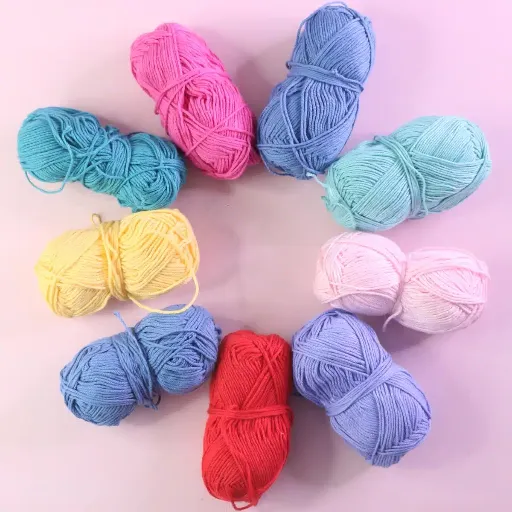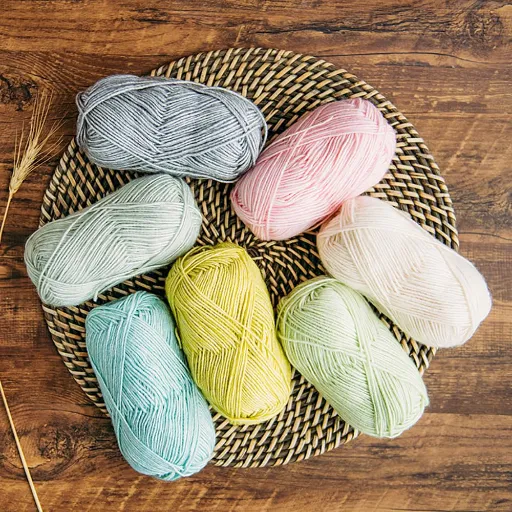Synthetic fabrics come in hundreds of options and it gets baffling as to which will suit your needs. Among the more famous ones are acrylic, polyester, and nylon-with varying properties for strength and uses. If you are buying sturdy clothing, home textiles that can be used in many ways, or specialized gear, understanding these three materials will help you make better judgments. This will break down acrylic, polyester, and nylon, from their basic characteristics to pros, cons, and best uses. Now, you will be able to apply the information gained in choosing the right fabric according to your lifestyle and requirements.
Introduction to Synthetic Fabrics
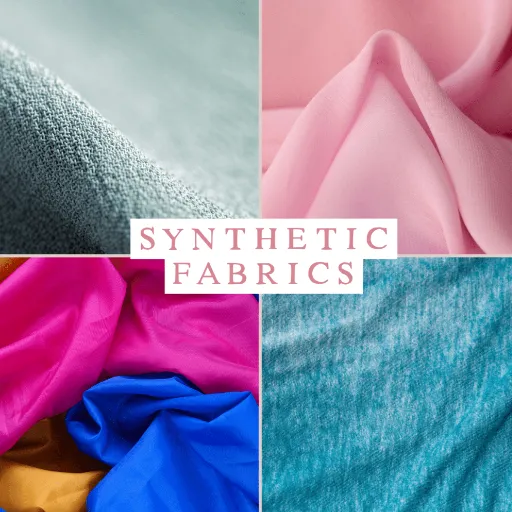
Explanation of Synthetic Fabrics
The term ‘synthetic fabrics‘ refers primarily to those fibrous materials made through chemical processing usually starting from compounds obtained through petroleum, coal, or natural-gas processing. Natural fabrics are usually made from plants or animals. Synthetic fabrics are engineered to meet specific needs such as durability or water repellence, while at other times softer qualities are sought after: for instance, synthetic fabrics are very flexible. In general, synthetic fabrics are designed to fit various demands, which is why they have found broad applications from the fashion industry to home textiles and industrial use.
Strength and durability constitute one of the major features of synthetic fabrics. Polyester and nylon are common examples, renowned for being strong against wear and tear, hence making them perfect materials for action-wear or outerwear-like clothes. They are famed for being shrink-proof and resistant to wrinkling and fading; such properties imbue garments with longevity. Other advantages include being lightweight, thus contributing to comfort and functionality in various designs.
Many treatments and blends could be applied to synthetic fabrics, depending on whether their properties require enhancement. For instance, treatment can be given to make synthetic fibers moisture-wicking and highly suitable for sportswear. Also, blending synthetic fibers with natural ones like cotton increases comfort and breathability. On the other hand, it is also to be kept in mind that while some synthetic fabrics are not as breathable as their natural counterparts and may cause environmental nuisance in view of their petroleum origin and long decomposition period. These characteristics should assist you in selecting the right synthetic fabric for your particular use.
Acrylic, Polyester, and Nylon: Everything to Know
Being the massive three synthetic fabrics, they all come with quite some differences concerning features and applications. Acrylic is a lightweight fabric with a soft feel, almost akin to the wool feel. Providing insulation very well, it is suitable for sweaters, blankets, and winter clothes. On the downside, it gets less breathable and may create pills with time, negating comfort and durability.
Polyester, meanwhile, is another name for durability and easy maintenance. It stays away from wrinkles, shrinking, and stretching, so it’s quite favored for activewear, home textiles, and even outdoor gear. The polyester also dries quickly and wicks away moisture, although it retains heat a little more than natural fibers, making it less weaponized in hot climates.
Nylon has strength and elasticity and is, therefore, used in products that require durability such as hosiery, sportswear, and luggage. It is fairly abrasion and wear resistant so as to last long. Nylon is rather light and smooth but does not absorb moisture—under humid conditions, it might irritate. Knowing the special properties of these materials will help to reach decisions concerning specific uses by balancing functionality, comfort, and the environment.
The Importance of Fabric Knowledge
Understanding fabric choices is essential for making informed decisions about clothing, upholstery, or just about any other textile needs. Different fabric types have certain properties that influence attributes regarding strength or durability, comfort, and function. For instance, cotton as a natural fiber is considered breathable and soft and is best suited to either being used in a warm climate or against sensitive skin; nylon, however, as a synthetic material, is known for its strength and resistance to wear. The right kind of fabric given its features should be chosen in order that the final product meets a specific set of requirements.
Moreover, fabrics continue to bear a heavy handicap in environmental considerations. While natural fibers give comfort and are biodegradable, the catch is that they require so much water, whereas the energy consumption in manufacturing synthetic fabrics is so high that it can be implicated in microplastic pollution. Understanding the various impacts of these fabrics allows consumers and manufacturers to make decisions that translate into sustainable practices in balance with performance requirements.
Ultimately, knowing the options in fabrics presents a better choice of deciding to use any for oneself, for comfort or for longevity, or even for environmental considerations. When one knows the activities of different substances to make different choices tailored to particular needs, it also forms a psychic disposition that aligns the consumer to think about the least consumption patterns. That would be a win-win for him and the environment.
Key Differences Between Acrylic and Polyester

Acrylic vs Polyester: Which Material is Better to Wear?
Choosing between acrylic and polyester is a tough decision that depends on different requirements: comfort, weather conditions, durability, or simply personal preferences. Both are synthetic types, but their different characteristics make each better suited for different scenarios.
Comfort and Feel:Acrylic is soft, silky, and woolly in feel. This makes it the perfect compromise for warm winter wear such as sweaters and scarves. It gives warmth and feels light, but it also lacks the breathability that natural fibers or polyester provide. Polyester might be a little too smooth and slippery with its soft texture. It feels less warm than acrylic but it breathes much better because of its lightweight nature, and is therefore considered more suitable for activewear and warm weather.
Durability and Maintenance:Gaining high durability and being resistant to stretching, shrinking, or even wrinkling, polyester is very much low-maintenance. This. It simply takes more washing and already tough usage, keeping up with the image for a much longer time. Although acrylic is fairly durable, it is susceptible to pilling (the formation of small, ugly balls of fibers on the surface) and, if subjected to heavy use, may wear out faster.
Moisture-Wicking and Breathability:Polyester scores very high in moisture-wicking ability: It sweats about sweat very fast, keeping the wearer dry and low-maintenance. This is why it is used in sportswear and athleisure. On the contrary, acrylic does not keep track of moisture well and may feel uncomfortable in situations where excessive perspiration occurs.
Climate Suitability:Acrylic is often chosen for colder climates owing to its thermal insulation properties. It traps heat very well and feels like wool, creating a warm and cozy feeling. Polyester, meanwhile, is better for moderate to warm climates due to its moisture-wicking and breathable properties.
Environmental Impact:Both are synthetic materials derived from nonrenewable petroleum-based energy sources and are thus highly polluting. Some technology has been developed for polyester to allow recycling into recycled polyester (rPET), thereby helping to reduce waste. The complexity and elevated costs have meant that acrylic is rarely recycled.
Pricing Comparison:Both acrylic and polyester fall into more affordable alternatives to natural fibers, but moving into the domain of polyester, it is a bit cheaper owing to widespread production and its diversity of uses. Second, given its longer life, polyester turns out to be an economical choice over time.
Comfort and Wearability
When it comes to comfort and wearability, the difference between polyester and acrylic is conspicuous. Polyester is lightweight, durable, and with moisture-wicking properties, it is perfect for activewear and apparel suitable to wear in different climatic conditions. Its texture is smooth and soft to the touch; however, it tends to trap heat, which might make it an uncomfortable choice in warmer environments. The feel of polyester has increased its credibility after recent enhancements in its manufacture with particular reference to breathability.
Contrary to this, acrylic is valued for warmth and softness-it feels like wool. It is used for cold-weather apparel and accessories, such as sweaters and scarves, because it offers good insulation. Acrylic, though soft and warm, rarely breathes well compared to polyester, which may cause discomfort in more humid environments. Moreover, wearability is reduced as acrylic tends to pill when used for long.
Both materials offer respective advantages depending on the intended use. If you want moisture-control abilities plus versatility, then polyester is the best option. Acrylic becomes the economical option for those who want warmth and softness little more unlike cooler conditions, really. Your choice depends on your needs, activities, and climate preferences.
Breathability and Insulation Factors
While considering fabrics for any purpose, breathability and insulation are very important factors to consider. In general, most of the materials allow air and moisture to travel through, thereby sleeping outside in comfort and less sweat accumulation by the occupant. In their regular state, Polyester used to be less breathable unless designed specially with some sorts of mesh or moisture-wicking properties; thus, it is usually rated as less ideal for warm-weather activities. In contrast, acrylic tends to remain fairly unventilated due to its density and synthetic nature, making it rarely suited for good ventilation requirements.
Although acrylic has greater heat retention and warmth-providing capacity in colder climates, its structure traps air effectively, resulting in its extensive use for winter wear, such as sweaters and scarves. Polyesters, while mediocre in their own right in terms of insulating properties, can be layered or blended with other fibers to enhance their heating qualities. This gives it a fairly multifunctional role when needed for really outdoor or athletic apparel where both warmth and the lower weight option come in handy.
The choice, of course, between polyester and acrylic, depends largely upon what one’s needs are. Polyester, when incorporated with moisture-wicking properties, seems to offer best in breathability and versatility with active usage. On the other hand, acrylic is essentially the cheaper option that offers superior insulation and warmth in colder climates. It comes down to whether you want to be guided by these properties or by their contrary counterparts to help you make an informed decision on their usage and environment.
The Role of Nylon in the Synthetic Fabric Landscape
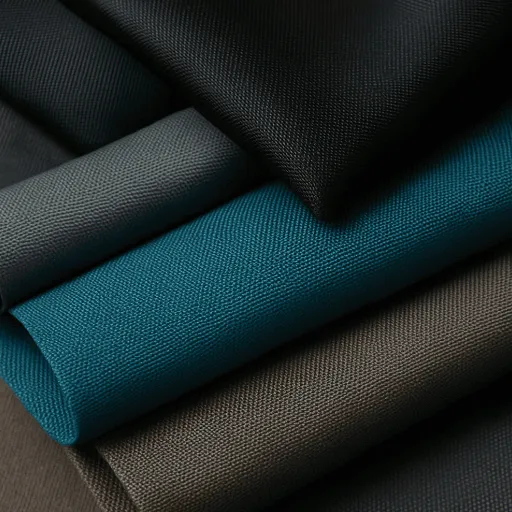
Comparative Analysis of Nylon, Acrylic, and Polyester
Nylon offers strength and elasticity, acrylic excels in warmth, and polyester is highly durable and versatile.
|
Parameter |
Nylon |
Acrylic |
Polyester |
|---|---|---|---|
|
Strength |
High |
Moderate |
High |
|
Elasticity |
Excellent |
Low |
Moderate |
|
Warmth |
Moderate |
Excellent |
Low |
|
Breathability |
Moderate |
Low |
Moderate |
|
Durability |
High |
Moderate |
High |
|
Versatility |
High |
Low |
High |
|
Moisture-Wicking |
Moderate |
Low |
High |
|
Cost |
Moderate |
Low |
Low |
|
Environmental Impact |
Moderate |
High |
Moderate |
Unique Properties of Nylon Fabric
Nylon fabric is celebrated for its combination of durability, elasticity, and adaptability across a plethora of uses. The following are principal characteristics, with the details thereof:
High Strength and Durability:Nylon is one of with of the very high tensile and abrasion-resistant synthetic fibers. Hence, it may typically be applied to materials requiring long life, for example, ropes, parachutes, and cords for industrial use. On average, Nylon is rated at a 75 MPa tensile strength rating, which makes it highly resistant to stress.
Elastic in Nature:Stretching and recovering shape without any permanent deformation is an exceptional characteristic of nylon. On the other hand, it fits into activewear, lingerie, and swimwear, offering comfort and flexibility.
Chemical and Abrasion Resistance: Nylon resists many types of chemicals, oils, and greases, and thus it is also used industrially. With its abrasion resistance, it wears well even under highly abrasive conditions such as carpeting fibers or outdoor gear.
Lightweight and Moisture-Wicking :Being a lightweight fiber, nylon hardly absorbs any moisture (less than 4 percent of its weight). In fact, this accounts for its quick-drying property, which makes nylon a prestigious fiber in performance and sportswear for moisture-wicking purposes.
Thermal Resistance:Nylon can withstand moderate heat with a melting point of about 220°C (428ØF), though less than some higher polymers; however, care must be taken to avoid prolonged exposure at high temperatures.
Versatility in Application: Nylon finds applications in textiles, automotive parts, fishing nets, 3D printing, and more. The molding ability and strength are primary criteria applied in selecting nylon to serve both consumer and industrial markets.
Environmental Considerations:abrasion-resistantPutting it simply, nylon production is firstly dependent on non-renewable petroleum resources; conversely, recycling techniques and alternatives in bio-nylon lessen the direct toll on nature.
At present, the nylon industry is envisaged to grow extensively worldwide, accompanied by a higher demand in automotive, fashion, and home decor sectors. Such adaptability, coupled with advancements in sustainable production methods, will sustain nylon in contemporary applications.
Applications of Nylon in Fashion and Home Goods
Nylon is a very functional and durable fabric applied in both the fashion and furnishing worlds; hence, combining style and functionality.
- Fashion Industry: stretchy Nylon finds usage in activewear, hosiery, and outerwear because it is lightweight, stretchy, and manages moisture. Athletic apparel companies make their nylon fibers into leggings, jackets, and sports bras to deliver comfort and freedom for high-performance activities. Also, nylon, by virtue of its fine texture and smooth finish, goes well into stockings, lingerie, and swimwear.
- Accessories: Stretchy is also extensively used to make various other available accessories like bags, backpacks, and umbrellas. It is tear-resistant and water-resistant, apt for items being carried or used amidst fluctuating weather. Most present-day luggage brands use nylon because of its weight-to-durability ratio, with the products being made for the rigors of both everyday use and travel.
- Home Goods: Because of nylon’s strength and resistance, many home items employ nylon. For instance, nylon rugs can resist stains and being trampled upon, making them great choices for families. Furthermore, nylon gets used in upholstery and curtains and in the kitchen for items such as heavy-duty cooking utensils.
- Technological Integration: Innovations allow for nylon production to yield recycled makes, creating sustainable applications for both fashion and home uses. Both manufacturers and consumers benefit from this ecological trend that reduces waste while retaining the versatility and performance of nylon.
The versatility and beneficial qualities of nylon make it a choice fabric for various industries, ensuring its perpetual relevance in day-to-day life as both a functional and fashion element. Its continued evolution and later integration into sustainable practices promise its future viability.
Environmental Impact of Acrylic and Polyester Fabrics
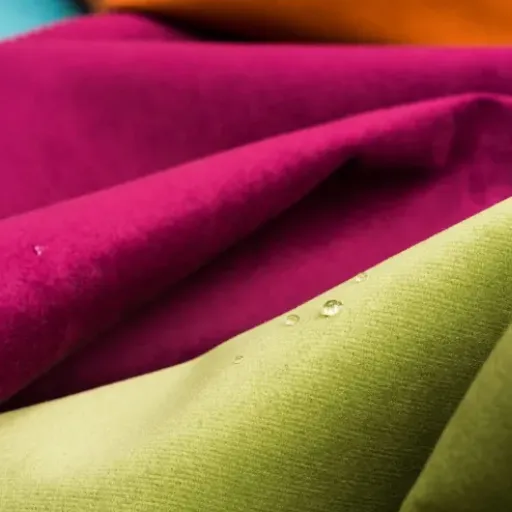
Production Processes and Pertinent Sustainability Concerns
Both acrylic and polyester being synthetic fibers have an origin in petrochemicals. The manufacture is by the polymerization process with acrylonitrile monomer, a compound originating from fossil fuels. Polyester is produced mostly by polymerizing ethylene glycol and terephthalic acid, both again of petroleum origin. The processes thus are largely dependent on nonrenewable sources, consume energy, and result in the emission of GHGs, thereby contributing to climate change.
Some other sustainability concerns relate to their environmental footprint across the entire lifecycle. They consume a lot of water and energy during their production and generate chemical wastes, potentially contaminating the surrounding ecosystems if not treated adequately. Being non-biodegradable means that once these fabrics are disposed of, they remain for centuries and cause other problems. In landfills and in the marine environment, their presence is increasingly felt, microplastics borne of synthetic fabrics having been identified as major pollutants of water systems.
Two-fold interventions involve bettering production methods to save energy and instituting a recycling technology to recover materials from unused or discarded materials. The bioengineering of alternatives and closed-loop production systems has gained much attention. The implementation of such sustainable solutions must thus be an organized effort between manufacturers, policymakers, and consumers to promote these pages for the ecological conservation of acrylic and polyester fabrics.
Disposal and Recycling of Synthetic Fabrics
With the increasing usage of synthetic fabrics such as acrylic and polyester come enormous environmental issues in disposal and recycling. These materials are non-biodegradable and may sit for a hundred years or more in landfills-they are serious polluters. Improper disposal of these fabrics would also mean the release of microplastics that could reach ecosystems, affecting wildlife and contaminating water sources.
Recycling synthetic fabrics basically involves recovering raw materials from these fabrics for reuse. Mechanical recycling commonly takes place-the fabrics are shredded and reprocessed into fiber that can be woven into new textiles. Another approach is chemical recycling, turning synthetic polymers into their base chemicals for conversion into new materials. Despite the promise these technologies hold, they consume too much energy and require extensive infrastructure, thereby hindering their mass usage. To increase rates of recycling, systems need to be efficient, and consumers should be educated about proper disposal.
To address these priorities, collaboration between industries, governments, and individuals is required. Businesses can innovate cleaner recycling technology and invest in closed-loop systems, while governments will regulate and create incentives for sustainable waste management and recycling processes. Meanwhile, on the consumers’ side, proper disposal, following sustainable brands, and cutting down on consumption in synthetic fabrics all go a long way. When efforts are channeled at all strata, there will be progress toward reducing the environmental impact of synthetic textiles.
Eco-Conscious Choices for Consumers
Consumers have a great deal of say when it comes to a sustainable world and mitigating the ill effects brought about by synthetic textiles. One of the simplest things consumers should now do is to consider buying clothing quality-based as opposed to quantity-based. Opt for something to last forever, which can be worn and styled in multiple ways. Doing so will cut down the demand for fast fashion, which is usually dependent on synthetic materials that pollute.
Other choices would be to go for natural, organic, or recycled fiber clothing brands. Organic cotton, hemp, or recycled polyester is an often-cited example of an environmentally-friendly choice, as opposed to the conventional synthetic path. Certification labels can be looked for if one wants to ensure that the products are under ethical and sustainable conditions of production.
Care must be taken in maintaining and extending the life of existing clothing. These include repairing damaged garments, washing clothes with due care so as not to cause microplastic pollution, and either donating or recycling items instead of throwing them out. These environmentally conscious steps allow consumers to play their part toward a greener future.
Practical Care Instructions for Synthetic Fabrics

Washing and Drying Techniques
Synthetic fabrics such as polyester, nylon, acrylic, and spandex require a delicate set of washing and drying methods so that the material retains its strength and the environment is given due consideration. Research reveals that during washing, synthetic fibers release microplastics into water sources, thereby polluting them and threatening marine life. One could take into account the following practical steps:
- Use a Gentle Cycle:Choose either a gentle or a delicate cycle with synthetic items. Increased friction in washing causes microfibers to shed. Use cold or lukewarm water, about 30°C (or 86°F), as far as retention of synthetic fibers is concerned, and for energy conservation too.
- Use Liquid Detergents:A powder detergent contains abrasive particles that damage the fabric and contribute to microfiber shedding. Liquid detergents are gentler and hence will be good for synthetics.
- Do Not Overload Your Washing Machine: Forcing a washing machine is already detrimental: increased friction means clothing damages, wears, and sheds more. Provide ample room for clothes to waltz during the washing procedure.
- Air-Dry Whenever Possible: exposureSynthetics dry fast; hence, air drying is the quickest and greenest option to consider. Avoid direct sunlight because exposure to the sun damages the material and causes discoloration.
- Low Heat or No Heat Drying:If dryer drying is a necessity for you, try to set the dryer at low heat or with no heat so that the synthetic fibers never shrink or melt under their watch. High heat is quite detrimental to the elasticity and endurance of the material.
Using these approaches not only protects your synthetic garment from premature aging but also helps lessen its impact on the environment. Recent studies have shown that these small, deliberate steps can reduce microfiber shedding by more than 25 percent, ensuring cleaner waterways and a foothold toward a sustainable future.
Stain Removal Around Acrylics and Polyesters
When it comes to stain removal in acrylic and polyester fabrics, fast action is critical. To blot, absorb any excess liquid with a dry cloth. Rubbing is not recommended, as it might push the stain deeper into the fabric. Letting the stain sit for a while will only serve to embed it more. In cases where an oil or grease stain is concerned, sprinkle a bit of baking soda or cornstarch onto the stained area and leave it for about 15-20 minutes. These substances will absorb any lingering residues from the stain, which you can brush away gently afterward.
The stain can then be cleaned with a solution of mild detergent and water. Try to gently rub the fabric with the use of a soft brush or sponge in small circles. Keep the stain-bound detergent on for several minutes so that it penetrates the particles that cause the stain. Rinse thoroughly with cool water, washing off the detergent, and check whether the stain has gone. Repeat if necessary.
Then wash following the instructions on the care label, choosing a gentle cycle with cold or lukewarm water, as acrylic and polyester do not like heat. If possible, air-dry to prevent shrinkage since the dryer will be too hot. These are the steps to keep your synthetic garments free of stains and of good quality.
Long-term Maintenance of Synthetic Fabrics
First of all, the successful long life of a synthetic fabric depends on following the care instructions on the garment label. This means everything from washing and drying to storing is pertinent to the fiber involved. Polyester and acrylic are highly heat sensitive; hence, wash them in cold or lukewarm water, and never place them in a hot dryer setting. Air the garment out if possible to avoid shrinking or impairing other physical features.
Frequent cleaning keeps the fabric in good shape, and washing should not be overdone. Mild stains can be treated by spot cleaning with mild soap and rinsing thoroughly before washing, or using a detergent for synthetics or delicate fabrics. Ironing may be done with low heat or at a synthetic-safe temperature, followed by placing a cloth between the iron and the fabric to avoid direct contact.
Lastly, and most importantly, store your synthetic garments appropriately to maintain their shape and quality. Fold a bunch of synthetics and store them in an area that is cool and dry and away from direct sunlight so that there will be no color fading or fiber weakening. Do not hang those sweaters or other heavy garments because these tend to warp or stretch. Using these simple steps, synthetic fabrics can remain durable, looking good, and ready for long-term use.
Frequently Asked Questions (FAQ)
Q: What differentials exist between polyester and acrylic fabric?
A: Polyester being a synthetic made from petroleum, is otherwise acrylic since it is crafted from acrylic acid. Usually, polyester is more durable and retains shape better compared to acrylic, which is softer and has a wool-like feel. In reverse, acrylics are less able to withstand wear and tear and pilling is a term frequently used to describe this unwanted degradation.
Q: Does the dyeing process of polyester differ from that of acrylics?
A: Generally, the dyeing stage of polyester production demands higher heat levels and more specific dyes; acrylics, on the other hand, can be easier to dye with a wider range of dyes. One of the well-known properties of polyester is its fastness to colors; acrylics, however, sometimes suffer from color retention issues with time.”
Q: Is polyester or acrylic suitable to be used for making any sort of outdoor clothing?”
A: Yes, acrylic and polyester fabrics are both amicable to outdoor use. Polyester is better regarded for its long-lasting properties and resistance the fading resulting from the sun. Thus, it’s more accepted as an outdoor fabric. Acrylic is softer, yet it could be a bit less breathable than natural fiber such as cotton or wool. So, the choice entirely depends upon the demand.
Q: What advantages does acrylic yarn have over polyester yarn?
A: Well, acrylic yarn is softer and provides a texture that feels like wool, so it is okay to wear. It is also less costly than polyester yarn. It, however, develops pilled apprehensions as time progresses, while polyester fiber is tougher and will hold its shape.
Q: Which one is more environmentally friendly: polyester fabric or acrylic fabric?
Polyester is made from polyethylene terephthalate, which is a petroleum-based source. Both fabrics being synthetic have their effects on the environment, but polyester generally has a perception of being less environmentally friendly due to the processes requiring much energy in its manufacture. Acrylics may have about the same environmental footprint as polyesters; however, they might from a recycling point of view.
Q: What factors should I consider in choosing between acrylic and polyester for the project?
A: When deciding between acrylic and polyester, consider what kind of softness and durability is expected from the fabric, as well as its purpose. If you’re going for something that feels somewhat like wool, then acrylic would probably be the best choice. Polyester, meanwhile, is typically preferred in cases where the fabric is to be durable and resistant to wear.
Q: How breathable are acrylic and polyester fabrics compared to each other?
A: Both acrylic and polyester fabrics have less breathability than natural cotton or wool fibers. Polyester has some moisture-wicking properties, which place it among activewear-appropriate materials. Acrylic is a bit softer and somewhat warmer as it might trap heat and moisture, not so comfortable in warmer weather.
Q: Can polyester and acrylic be blended in a fabric?
A: Yes, acrylic and polyester fibers can be blended to produce a material that offers the advantages of both. So the wool blend of acrylic and polyester can furnish softness, alongside increased durability and shape retention for an endless range of uses.
Q: How are you supposed to take care of acrylic and polyester fabric?
A: Washing acrylic- and polyester-made fabrics involves putting the machine set for a gentler cycle and cool water. Never put on a high heat setting when drying, as these two fabrics can be quite sensitive to heat. Always refer to the label for care instructions, which could provide longevity to that piece or maintain some qualities of the fabric.
References
-
Big Z Fabric Blog – Acrylic vs Polyester – Compares the properties of acrylic and polyester, focusing on softness, durability, breathability, and common uses.
-
Textile Yarn – Key Differences Between Acrylic and Polyester – Highlights the texture, durability, and development of both fabrics, providing a detailed comparison.
-
Sailrite – Acrylic vs. Polyester Marine Grade – Discusses the UV resistance, colorfastness, cleanability, and abrasion resistance of acrylic and polyester fabrics, particularly for marine-grade applications.








